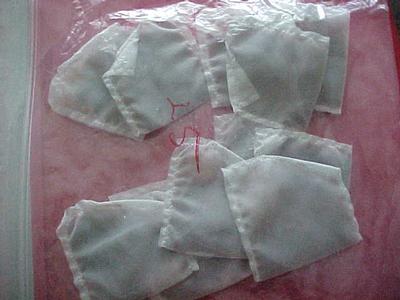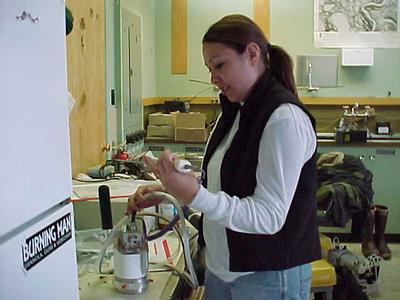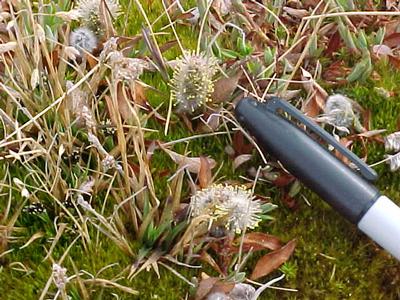28 June, 2001
Thursday
Bright, sunny day in the high 40, low 50'3 feels almost tropical! We
worked without gloves most of the day. This weather is most welcome but
every good thing has it's opposite mosquitoes are not far behind. They
were flying around but there was enough of a breeze to keep everyone happy.
Glen and I completed the plant counts today. All 18 plots are counted and
put into a simple file to be compared to the 2nd and then the final time
measurements are taken.
Michelle and Lety finished setting up their plots today. In all they
have 8 randomly placed, meter square, plots, which they have blocked off
with string. They are working from the same plots but asking different
buy complimentary questions.
Michelle wants to find out if there is a difference between wet and dry
tundra in plant productivity. One's initial answer might be to think the
more water available to plants the more productivity but remember the 5
growth variables for tundra vegetation mentioned a few journals ago? Up
in the arctic that is not necessarily true, there are other factors that
interplay with each other. Michelle also is looking into the interaction
of fungi and the root systems of 2 arctic shrubs. Does soil moisture and
root biomass have a connection with fungal infection rates?
Lety is investigation soil respiration and nutrient levels. Her research
asks the question, if soil nutrients are present will soil respiration
increase along with them? There a number of ways to test for soil
nutrients Lety chose to use resin bags that she placed into the plots.
She made two slits in each plot and placed 2 resin bags in each slot.
These resin bags look like tea bags but they contain a cation and the
other an anion that attract nitrates if they are present in the soil.
When the bags are removed from the plots, usually bi-weekly, they will be
sent to the lab at SDSU to be analyzed. Two 5-inch circular rings have
been set in each meter square, one enclosing vegetation and one without
vegetation Each area will be measured by the LiCor to get flux data.
These flux measurements will be compared to the nutrient levels to see if
there exists a correlation between the two.
All the research by the San Diego team is centered around climate change
and what effects it will have on the arctic system. Walt Oechele's group
has spent many years here in Barrow, Dr. Oechel did work here in the
70's, gathering data on both local, and regional scales of the north slope
of Alaska.

These tea bag looking objects are used to attract various nitrates that are in the soil. One bag contains anions and the other cations which attract the nutrients to them. They are sent to the lab at SDSU to be analyzed. Letty is using these to find out amounts of nutrients present in each of her plots to see if more nutrients equal greater plant growth.

Leetty is looking over the small LiCor chamber which she will use to collect flux data from her 8 plots. It is much smaller than the cuvette Glen is using on his plots but functions the same way.

Salix rotundifolia, flowering, an arctic shrub which both Lety and Michelle are investigating. Below is a flowering Salix pulchra, the other woody shrub which is in their studies.

Contact the TEA in the field at
.
If you cannot connect through your browser, copy the
TEA's e-mail address in the "To:" line of
your favorite e-mail package.
|
